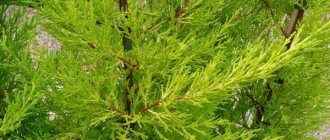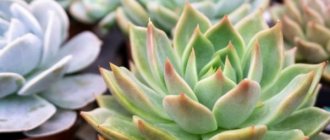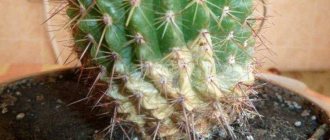Sansevieria is the scientific name of a popular houseplant. Botanists call it chicken tongue, and in other countries it has been given equally exotic names: pike tail, Indian sword, devil's tongue, leopard lily. The plant is undemanding and can be adapted to various conditions. Various types of Sansevieria can be found in homes, offices, hospitals and offices.
The pillow is preferred by lovers of indoor plants with rich greenery. The flowering plant looks great, and the green foliage remains presentable regardless of the growing season.
Lighting
In its homeland, Sansevieria grows in conditions of strong solar activity. However, it does not necessarily need to be in the sun to grow and develop.
Mother-in-law's tongue feels great in diffused light and partial shade.
Sansevieria is very unpretentious, but variegated varieties require more light and may even lose their color if there is not enough light.
Direct sunlight does not harm sansevieria at all , so if it is exposed to the sun for several hours a day, no sunburn will appear on the leathery leaves.
Why is the flower crying?
During the flowering of some types of sansevieria, small transparent drops form on the stem of the peduncle under each bud. The common people believe that this is how the plant cries. In fact, the pike tail secretes sweet nectar in a similar way, which attracts pollinating insects. Sometimes nectar appears on leaves and flower segments due to mechanical damage.
The “crying” of a flower is directly related to the flowering of the plant and enhances the accompanying signs. If flowering associated with the release of nectar occurs in winter, then unpleasant events and quarrels cannot be avoided; if in summer, then favorable changes will certainly come.
Watering
Sansevieria stores a large amount of moisture in the rhizome, and hard leaves evaporate it very poorly. Therefore, this plant does not need abundant watering and is even harmful. It is adapted to water shortages and dry soil.
Water the sansevieria so that the lump of earth dries out at least 2/3 . In summer, the flower needs to be watered well once every 10 days, and then the substrate in which it grows should be dried.
In winter, watering is reduced, watered once every 2-3 weeks, depending on the room temperature. Sansevieria is not picky about the temperature and composition of water. However, you should not water the plant with cold water.
How to care for mother-in-law's tongue at home?
The plant is quite undemanding, adapts well to various conditions, requires moderate watering and can grow well in various lighting conditions. Propagation by seeds is practically not used for this plant. Vegetative propagation is used at home and in nurseries. Even under unfavorable conditions, the flower will be viable, but growth may slow down and loss of decorative value may occur.
The optimal air humidity is 70%, and the temperature is from +16 to +30°C. Precautionary measures:
- Regular feeding;
- dust and dirt from leaves and splashes;
- Ambient air humidity up to 70%.
- Replant as the flower grows or immediately after purchase;
- moderate, irregular watering;
- Maintain the temperature in the room where the flower grows between +16°C and +30°C;
Lighting
The light must be suitable for the flower. The most favorable location is on the south side of the house. However, during the summer months it should be possible to provide shade.
Watering
The intensity of watering depends on the vegetative state of the plant, ambient temperature and humidity, time of year and light intensity.
Watering rules:
- The plant is drought-resistant; in summer it should be watered once a week after the top layer of soil has dried.
- If the weather is cloudy and not hot, water once every 10 days.
- In winter, watering should be limited to once a month at a temperature of +20°C, after the top layer has dried.
Watering conditions:
- When watering, avoid getting moisture at the base of the leaves, as this can cause disease.
- It is best to use melt or rain water, but if this is not available, you can use settled tap water.
- Irregular watering and waterlogging can lead to the development of fungi, rotting and yellowing of leaves.
Spraying
If the room has sufficient humidity and low temperatures, hemlock does not need to be sprayed. Drops of liquid inside the rosette can cause rotting and death of the plant. To maintain a presentable appearance, it is enough to wipe the plant with a cloth.
Humidity
Indian gladiolus comes from steppe and semi-desert regions, so the hedgehog is adapted to life in an environment with very dry air; High humidity can lead to plant diseases. Humidity above 70% increases the risk of developing leaf and root rot.
Temperature
The plant feels very good in summer. The most favorable temperature is +16°C. Maximum permissible temperature +5°C; low temperatures favor diseases of the root system.
Priming
In the leopard lily's natural habitat, the soils are light, nutrient-poor and loose. There is special soil available for sale for cacti and other succulents. You can prepare a mixture at home to soothe your mother-in-law's tongue. For soil, you need to mix in equal proportions coarse sand, turf, and leaf soil. To control parasites and their larvae, bake the soil in the oven or microwave before planting. Let the soil cool and then replant the plant.
Feeding
There are certain rules that must be followed when applying fertilizers:
- refusal of additional feeding in the winter months;
- Fertilize leopard lily varieties carefully, excess nitrogen can cause an increase in chlorophyll in the stems and loss of bright color, the leaves can become very green,
- In early spring and autumn, it is enough to feed the plant once a month.
- Fertilizers should be applied most actively in the summer months - 2 times from May to September;
- It is preferable to use special succulent food; if it is not there, you can use mineral food in small doses; next month, if well tolerated, the dose can be increased;
What kind of pot do you need?
The preferred materials for pots are ceramic, glass or plastic. Reed chicory does not have a deep root system, most of the roots are close to the surface, so a large pot is not needed. However, the hemlock tongue has significant mass, so the weight of the pot must be significant. In this case, the above-ground part of the plant will not outweigh the pot with the root system. As the hemlock matures, the diameter of the pot should increase. Each subsequent pot should be 2-3 cm larger than the previous one.
Root system of mother-in-law's tongue
Is it possible to trim?
The growth zone of Sansevieria leaves is close to the stump, so there is no need to specially cut it out. This may stop the plant from growing. Trimming the lower leaves is a controversial issue. Some botanists recommend plucking off wilted lower leaves to prevent fungal diseases and plant rotting. Other gardeners are wary of pruning leaves because the wounded surface can become a breeding ground for pathogenic bacteria.
How to replant a flower?
Transplanting mother-in-law's tongue is very similar to replanting many indoor plants. The best time is from March to June. The need for replanting can be judged by the raised root ball, which indicates strong growth of the root system. Young plants are very vigorous and require a large pot and annual replanting. With each replanting, the size of the pot should be increased by 2-3 cm. Mature plants should be replanted every 3-5 years. If the plant was purchased in a store, it is worth replanting it in a pot with new soil.
One of the signals for transplanting sansevieria
Rules for transplanting flowers:
- Remove the root system from the pot along with the root ball and check if the roots have rotted. Damaged areas should be cut off.
- At the bottom of the pot, approximately one third of the height of the pot, place a layer of drainage, which can be pebbles, clay pebbles or tile chips.
- Then a small layer of soil or a special substrate for succulents.
- Place the plant in the pot and cover it with the same substrate; you can knead the soil from time to time to stabilize it in the pot.
- Finish the replanting with abundant watering.
- When replanting tall plants, provide the mother-in-law with twine to prevent the pot from falling.
Reproduction of mother-in-law's tongue
The method of propagation depends on the variety. Species with colored leaves can only be propagated using rosettes. Species with single-color leaves can be propagated by rosettes, shoots, cuttings and rhizomes.
There is a division - breeding varieties with plain or colored leaves.
Distribution methods:
- In the spring, break out the shoots. Using a sharp knife, separate the young shoot from the mother plant. Sprinkle the cuttings with crushed charcoal and replant the young shoot.
- Dividing the rhizome is the most effective method of propagation and preserves the characteristics of the species. The mother plant is divided into three or four parts, depending on the size of the root. The root must be preserved at each growing point. The offspring are transplanted into new pots. Spreading mother-in-law's language
- Propagated from the leaves of the highest varieties of mother-in-law's tongue. Cut off a healthy leaf of the plant and divide it into pieces of 5 cm each. Don't forget to mark the top and bottom of the sheet. Leave parts of the leaves in the air for 12-24 hours, then place them in river sand with the root part down, slightly tilted, one-third. Cover the plant with a plastic bottle and leave for 30-45 days for roots to form.
The soil
In nature, Sansevieria grows on depleted rocky soils of semi-deserts. But in apartment conditions it is not at all necessary to plant it in an earthen mixture for succulents.
The plant is not susceptible to rotting, so mother-in-law’s tongue grows best in a universal soil mixture with the addition of raising agents : brick chips, perlite, fine gravel.
You can mix the substrate for planting sansevieria yourself. The most optimal composition: 4 parts turf soil, 1 part sand, 2 parts leaf soil, 1 part brick chips.
Soil preparation
Sansevierias are replanted once a year, if the plant is still young. If the sansevieria is more than two years old, then the transplant is carried out once every three years. It is best to replant in the spring. The indoor plant has a very extensive root system, so the pot must be selected taking into account the fact that the roots will grow and may begin to destroy the container. In order to prepare the soil for transplanting sansevieria, you need to take four parts of leaf soil, one part of turf soil and one part of sand. It is also possible to add peat or humus. It is necessary to ensure very good drainage for the plant.
Humidity
Existing in steppe and semi-desert climates, the plant has adapted to very dry air. Therefore, it is not necessary to maintain a certain humidity in the room where Sansevieria grows. In conditions of high humidity, the plant also does well, although the risk of root rot increases.
Sansevieria is not sprayed . It does not require high air humidity, and water getting inside the outlet can lead to its rotting. In order for the flower to have a beautiful appearance and not be dusty, it is enough to periodically wipe the leaves with a damp cloth.
What does the plant symbolize?
The mother-in-law's tongue flower has other popular names. The name "sansevieria" is scientific. However, it can usually be called “Indian sword”, “devil’s tongue”, “snake skin” and, of course, “mother-in-law’s tongue”. Such names have led to the emergence of negative signs associated with the flower. This is caused by the fact that its leaves resemble long tongues.
The association with the mother-in-law is also negative. She is often credited with the desire to prevent a young couple from living happily and calmly. She may not like her son-in-law and advise her daughter to find a more suitable partner. Of course, not every family has problems with their mother-in-law. However, such a point of view has a right to exist. Some people are of the opinion that the mother-in-law's tongue flower got its name because of a joke that has taken root.
According to the interpretation of certain signs, this plant contributes to the emergence of conflicts, disagreements and quarrels. But most people tend to believe that they should not rely on such superstitions. On the contrary, they insist that mother-in-law’s tongue manages to improve relationships in the family and minimize the number of difficulties.
A plant located in the house absorbs negative energy. Household members stop accumulating grievances and mutual claims. The atmosphere becomes warm and pleasant.
It is extremely important that a welcoming and positive atmosphere is maintained in your home. If you neglect this factor, then negative energy will begin to accumulate and intensify.
Over time, guests will appear in the house less and less often. A lot depends on the right choice of indoor plants. And the mother-in-law’s tongue will be able to cope with negativity.
This flower is unpretentious. He knows how to adapt to different conditions. Of course, timely care is important to him. If the owner takes care of his mother-in-law's tongue properly, then his life will become more harmonious, bright and joyful.
Diseases
Sansevieria is a plant that is very resistant to various infectious and fungal diseases.
Sometimes, when the soil is heavily waterlogged, root rot develops, and when water gets into the rosette, the leaves rot.
To preserve the plant, it is enough to reduce watering, dry the soil, and remove the affected rosettes.
Pests very rarely settle on sansevieria . Sometimes you can find mealybugs or scale insects, but the pests do not breed here in large numbers.
Therefore, they are often limited to only mechanical removal of harmful insects. If it is not possible to destroy the pests, you need to spray the plant with insecticidal preparations.
Pests
Sansevieria is very rarely attacked by pests. The leaves of the plant are too hard and covered with a thick waxy layer, so you can easily get rid of unwanted insects.
Red tick
Red mites are quite rare. It attacks growing points and hides in the axils of leaves. If pests are detected, it is necessary to treat with systemic acaricides, for example, Oberon.
Spider mite
You can get rid of spider mites using a soap solution; wipe all parts of the plant with it. In case of severe damage, you can treat the flower with Actellik.
Thrips
Thrips form colonies on the underside of the plates, while they lose their rich color and fade. To save the flower, you need to carry out several treatments with Actellik or Fitoverm.
Mealybug
If the plant is twisted or yellowed, this may be a sign of a mealybug. The parasite is removed in several stages: first, the plant is treated with a dry cloth, and then all its parts are sprayed with Karbofos.
Shchitovka
You can get rid of scale insects using a damp sponge. Parasites are removed manually, and then treated with Actellik, Karbofos or Fitoverm.
Problems
When growing sansevieria, even novice gardeners rarely have problems. But sometimes, due to significant errors in care, this flower can even die. It is necessary to regularly inspect it and analyze changes in its appearance.
Most often, the plant suffers from excessive watering. In this case, the leaves turn yellow and die, and they become soft. If you do not reduce watering, the root system may begin to rot.
With a lack of moisture, if sansevieria is not watered for months, the leaves become limp and wrinkled.
With prolonged exposure to low temperatures, the growth of the flower slows down greatly, then its leaves wither and die. In this case, if the temperature in the room is not increased, the plant may die.
When there is insufficient lighting, thin, weak leaves grow, and Sansevieria stretches out . Variegated varieties may lose light stripes or borders in the dark. If left in a dark place for a long time, brown spots may appear on the leaves, especially if over-watered.
How it blooms and how to propagate
Many people believe that Sansevieria does not bloom. In fact, it is blooming. And at the end of flowering, berries are formed that contain seeds. Therefore, mother-in-law’s tongue propagates not only by cuttings, but also by seeds.
- Ripe berries need to be collected and planted in a tray to a depth of about a centimeter. The distance between seeds is 5 centimeters. Prepare the soil in the same way as for replanting. Place a tray with
- seeds in a bright, warm place, cover with film and wait for germination. The first ones will hatch in two weeks. As soon as the plants get stronger, they can be planted in pots.
It’s easier and faster for “mother-in-law’s tongue” to propagate by cuttings. Separate the cutting, leave it in the air for 10 minutes to dry the cut, and then plant it in the prepared soil.
You can divide the roots that have green rosettes. It is better to do this when transplanting, in the spring.
If there is a yellow edging on the leaves of your mother-in-law's tongue, none of the propagation methods described above will work. Only the leaves need to be divided.
- Cut a healthy leaf at the base at a 30-degree angle.
- Place the leaf in the pink manganese solution.
- Then lift it so that only the yellow corner is in the manganese solution.
- Roots will appear from there.
- Also plant at an angle.
- When sprouts appear, cut off this leaf with a sharp knife.
Reproduction
In apartment conditions, Sansevieria propagates very easily by vegetative means. To propagate Sansevieria or mother-in-law's tongue, separate rosettes, parts of rhizomes and cut leaves are used.
The rosette, separated from the plant, and rhizome fragments are planted directly in separate permanent pots. This procedure is carried out in spring or summer during the growing season.
When dividing the rhizome, it is important that the planted part has at least one growth point. Then, with moderate watering of the shoots, they soon begin to grow and send out new shoots.
Sansevieria can be propagated from cut leaves . They are placed in water or immediately planted in the ground to a depth of 2-3 cm. To avoid rotting of the leaves, they should be watered moderately. After 1.5-2 months they take root and then form new shoots.
Now you know how to propagate mother-in-law's tongue at home.
Signs and superstitions
Sansevieria adapts well to indoor conditions and has a decorative appearance. That is why growing this flower at home is common. However, many flower lovers are afraid to place pots with mother-in-law's tongue in their homes because of the unkind superstitions associated with it. For example, there is an opinion that the plant is a muzhegon and provokes scandals and quarrels in the family.
Is it possible to keep a mother-in-law's tongue flower at home?
Reo flower - home care
In addition to negative superstitions, there are many good and positive signs. Many believe that mother-in-law's tongue can bring peace and balance to the family. From the point of view of the science of botany, Sansevieria can and should be kept in the house, since the flower absorbs harmful substances and compounds from the air that are emitted by furniture, building materials, plastic, and rubber. External remedies against inflammation, burns and wounds can be prepared from the juice of the flower. Tinctures are made from the leaf blades and taken internally to boost immunity.
For your information! Feng Shui fans also advise keeping a flower at home. Sansevieria in the house brings harmony, quarrels and conflicts stop among household members. In addition, the flower enhances thought processes and clears consciousness.
How to attract prosperity with a flower
In order not to miss the happiness and well-being of the family, it is necessary to properly care for it and prevent the appearance of diseases on the plant.
To attract well-being and other positive emotions, you need to:
- iron the leaf plates to quickly feel good in case of ailments and diseases;
- give a bush in a pot before flowering to show sympathy and receive love from a person;
- place a pot of sansevieria in the room where visitors and guests are received to bring benevolence and kindness;
- place the plant in front of the front door to protect household members from damage, and the evil thoughts of envious people and enemies could not cross the threshold of their home;
- put a flower in the bedroom of a husband and wife to stop quarrels and misunderstandings and attract love and understanding.
Note! For unmarried ladies, the flower will help in attracting a betrothed. It is necessary, while the plant is still young, to select one of the leaves of the bush and monitor it for a whole month. If nothing happens to him, he does not fall and rot, but continues to grow actively, then soon the girl will be able to achieve reciprocity from the object of her desire.
Mother-in-law's tongue brings harmony and prosperity to the home
Mother-in-law's tongue is a flower, caring for it at home does not require special skills and knowledge. It is not capricious to the surrounding conditions, but pleases with its pleasant decorative appearance. The bush has beneficial healing properties and is able to attract only well-being and harmony into the home.
Transfer
Young plants need to be replanted once every 2 years. Adult flowers are rarely replanted - once every 4-5 years, when the side shoots become cramped in the old pot. Sansevieria or mother-in-law's tongue is transplanted in spring or early summer.
The pot for the plant should be wide and shallow, since it grows wide and does not have long roots. First, the flower is removed from the pot and excess rosettes and shoots on the sides are cut off. The trimmed parts are planted in separate containers, and the old plant is transplanted into the previous pot using the transfer method.
Before planting sansevieria, you need to pour a good drainage layer a few centimeters thick of expanded clay or shards onto the bottom of the pot. Then a layer of fresh soil is poured onto the bottom, the plant is placed in a pot and the rhizome is sprinkled with fresh soil.
The plant should not be planted too deeply, and after replanting it is useful not to water it for 2-3 days so that all damage to the roots is healed.
Possible harm
Sansevieria foliage of any type contains a significant amount of saponins. These components belong to the category of quite toxic substances that are part of some diuretics, choleretic and laxatives. The ornamental plant should not be placed in areas accessible to pets and children.
However, sansevieria are among the very unpretentious and hardy indoor plants, which beginners or insufficiently experienced gardeners are happy about. And if you follow the growing technology, problems with this indoor decorative crop do not arise.
Useful tips
For amateur gardeners who grow sansevieria, you need to know a few useful tips, as well as the medicinal properties of the plant:
- "Mother-in-law's tongue" grows very quickly, but when it reaches its maximum height, its growth stops;
- The plant contains useful biologically active substances, for example, saponins. After undergoing the necessary processing, they can be used in medicines;
- Their sansevieria tincture can be used as an enema to eliminate intestinal problems;
- Sansevieria extract is used in the manufacture of choleretic, anti-inflammatory and laxative drugs. The juice of the leaves of the plant can be instilled into the ears for otitis, the skin of the leaves has wound-healing properties, and a decoction from the plant helps with infections of the genitourinary system.
Photos in the interior
In the house, Sansevieria becomes not only a decoration, but also a useful green pet that will create a pleasant, cozy atmosphere.
Toxicity of the plant and precautions for care and placement
Although Sansevieria is a beautiful plant and can be used for medicinal purposes, ingestion of its juice can cause serious poisoning.
It's all about saponins - useful substances that, after special processing, are used in medicines. However, in large doses they turn into poison.
Signs of Sansevieria poisoning are : pain and burning in the throat, excessive salivation, vomiting and diarrhea.
Cats and dogs that decide to chew the leaves of Pike Tail will experience vomiting, intestinal upset, and may develop dermatitis.
However, it is important to consider that all these symptoms can only appear if the plant juice enters the body. When applied to the skin, the juice has wound-healing properties.
Due to the fact that Sansevieria is a poisonous plant, certain precautions should be taken when placing and caring for it:
- All manipulations with the flower, for example, replanting or pruning, must be carried out with gloves and make sure that the juice does not get into the eyes;
- All trimmed parts of the plant must be immediately destroyed or thrown away;
- Sansevieria should not be placed in rooms where small children sleep or play;
- If there are cats or dogs in the house, it is better to place the plant out of their reach;
- At the first signs of poisoning with sansevieria juice, you need to induce vomiting, then drink activated charcoal and seek help from a doctor.
Is it possible to keep mother-in-law's tongue in the house?
Most areas of esotericism and Eastern philosophy consider this flower to be friendly to humans. According to the ancient philosophy of Feng Shui, all plants whose leaves point upward have positive energy and bring good luck to the owner.
Another assumption is that a flower with succulent and fleshy leaves collects negative energy and emotions of household members. If there are several such plants in the house, the positive effect is enhanced. Many gardeners note a beneficial effect:
- reduces the likelihood of quarrels and disagreements at home and at work;
- transform negative energy into positive;
- It increases the oxygen content in the air and reduces the concentration of dust and toxic substances.
- relieves emotional stress;
- evokes positive emotions;
- pushes people away from each other;
Is mother-in-law's tongue poisonous or not?
The air purifying effect is achieved through compounds called saponins. In low concentrations, these substances have disinfectant properties. Used in folk medicine in the form of balms and decoctions:
- pain relief;
- reduction of inflammation;
- increase the body's defenses.
- treatment of small wounds on the surface of the skin;
However, eating the leaves raw can cause poisoning, burning in the mouth and watery eyes. When transplanting, safety is very important, so all manipulations should be performed with gloves.
It is better to keep mother-in-law's tongue out of the reach of children and animals, and to replant it with gloves.
Description of the plant and species
Sansevieria is valued by gardeners for its rapid growth and original color of succulent leaves, amazing vitality and ease of care.
"Pike tail" is a member of the Agave family or, according to other sources, Asparagus. This perennial evergreen plant, which does not have a stem, grows naturally in savannas, semi-deserts and deserts of Africa and Asia.
The plant is a succulent that stores water in its tissues . It has an underground creeping rhizome with powerful rhizomes. Erect, fleshy leaves grow upward from a powerful root. They are very dense, lanceolate in shape, often covered with a waxy coating and pointed at the ends.
There are varieties of Sansevieria in which the leaves reach a height of more than a meter. Other species have small rosettes that grow wider than tall. Depending on the variety and type, the leaves can be painted in different shades of green or brown, and there may be horizontal or vertical stripes on their surface, or a bright edging.
“Mother-in-law’s tongue” blooms in early spring - the rosette produces a long peduncle, on which small white flowers are collected in a spike-shaped inflorescence, emitting a pleasant vanilla aroma.
Sansevieria blooms for 2 weeks.
The most common types for indoor floriculture are:
- Sansevieria three-lane - has long sword-shaped leaves reaching 1 meter in length. They have a bright green color with darker transverse stripes. A yellow-white border may be present.
- Sansevieria Hanni is a low-growing species, up to 30 cm high. Dark green leaves with various light stripes or inclusions form a rosette. It has several subspecies with different leaf colors.
- Sansevieria is large - it has wide fleshy leaves, 30-60 cm high, up to 15 cm wide. Their color is light green with dark transverse stripes and a reddish border.
- Sansevieria cylindrical - has dark green cylindrical leaves, 1.5-2 cm in diameter, with silvery transverse stripes. There is a deep groove along the leaf.
Signs associated with “mother-in-law’s tongue”
“Mother-in-law’s tongue” also has many popular names: “pike tail”, “Indian sword”, “snake skin”, “devil’s tongue” and this influenced the emergence of various signs and superstitions, most often unfounded, associated with this plant:
- a plant of gossip - some believe that “mother-in-law’s tongue” brings frequent quarrels and family destruction into the house. This is an absolute lie - Sansevieria is an excellent plant for strengthening the family - quarrels and showdowns disappear, love and mutual understanding return
- energy - the plant absorbs negativity - rudeness, bad mood, anger and sets up positive communication, while emitting the energy of creativity and peace
- getting rid of ill-wishers - the plant is able to stop gossip and drive away ill-wishers
- flowering of a plant - it is believed that if “mother-in-law’s tongue” blooms in winter, this is a sign of a major scandal associated with excessive care. If flowering occurs at any other time of the year except winter, this is a good sign that speaks of good luck in new endeavors.











